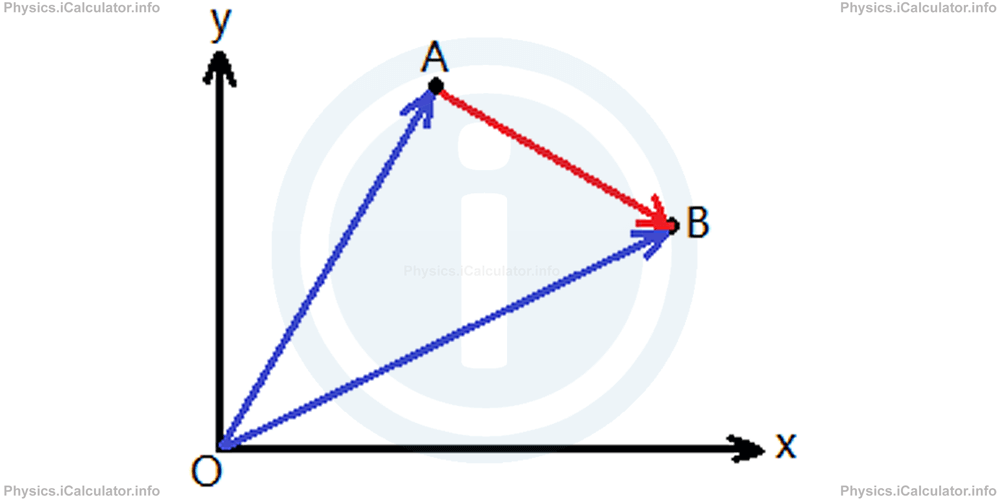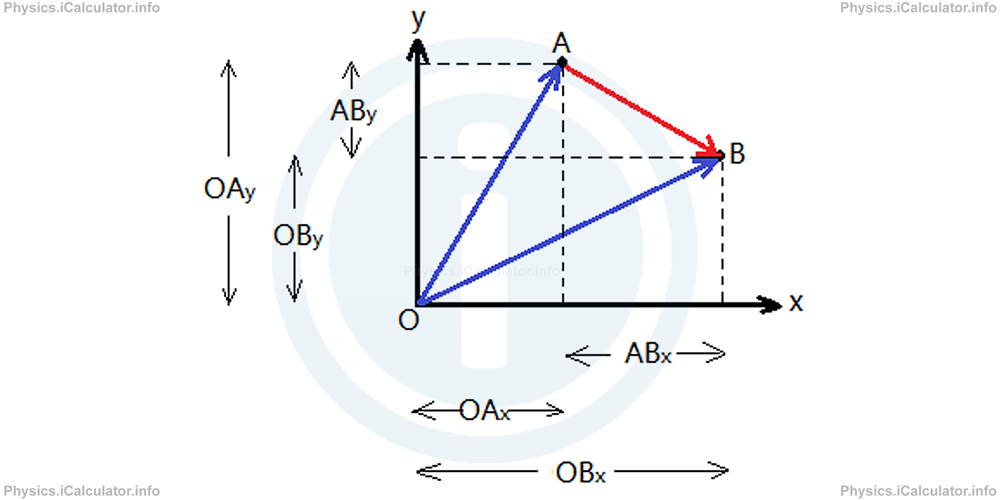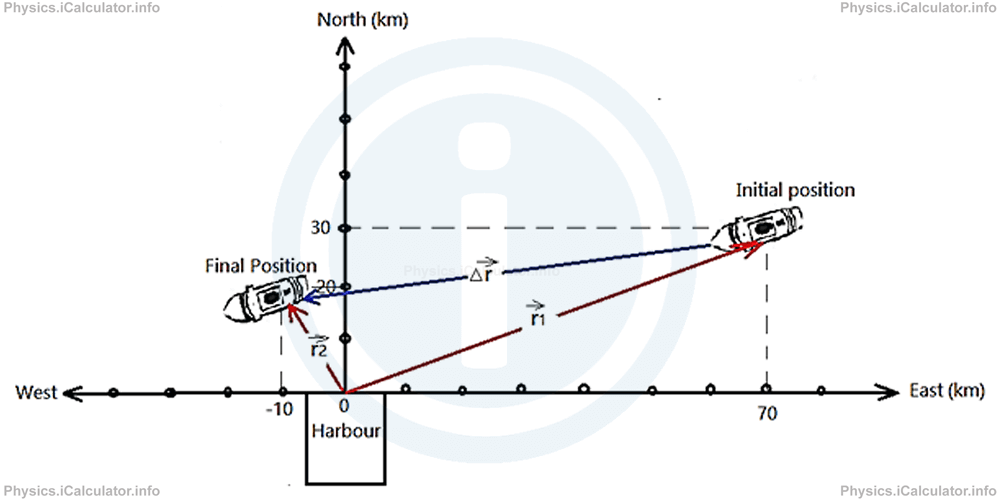Menu
Physics Lesson 3.4.2 - Displacement in the 2-D coordinative system
Please provide a rating, it takes seconds and helps us to keep this resource free for all to use
Welcome to our Physics lesson on Displacement in the 2-D coordinative system, this is the second lesson of our suite of physics lessons covering the topic of Displacement and Distance in 2 and 3 Dimensions, you can find links to the other lessons within this tutorial and access additional physics learning resources below this lesson.
Displacement in the 2-D coordinative system
As we stated in the Physics Tutorial "Position. Reference Point", the position of an object is a vector, which starts at the origin and ends at the object's location. When there is any change in position, we must consider two vectors: the initial and final position vectors which both start from the origin as shown in the figure below.

In this figure, the point A is the initial location of the object, so the vector OA⃗ represents the initial position vector r⃗1 and the point B shows the final location of the object, so the vector OB⃗ represents the final position vector r⃗2
From Physics Tutorial 2.2 "Addition and Subtraction of Vectors", we know (based on the triangle rule) that in the specific case,
= -OA⃗ + OB⃗
= OB⃗ - OA⃗
= r⃗2 - r⃗1
= ∆r⃗
In the above reasoning, we have made use of the addition with the opposite concept to represent the subtraction of two vectors. In this way, we obtained the well-known equation of Displacement:
In Physics Tutorial 2.1 "Vectors and Scalars", we said that vectors can be expressed in components to make the operations easier. We will do the same thing here as well. Thus, we have
and
Therefore, the magnitude of the Displacement vector ∆r⃗ is
= √(r⃗2x - r⃗1x)2 + (r⃗2y - r⃗1y)2
In the specific case, we have:
= √(OBx - OAx)2 + (OBy - OAy)2
Look at the figure below to be clear on the components

Example 2
A ship is 30km North and 70km East to the harbour. Then, it moves linearly and after a while, it goes 20km North and 10km West to the harbour.
- What is the Displacement of the ship?
- What can you say about the Distance travelled by the ship?
Solution 2
The harbour is taken as a reference point (origin). North direction is taken as positive as well as East, while West is taken as negative direction. Therefore, the figure is as shown below:

When writing the coordinates in the known format (East = x + ; West = x - ; North = y +) we have
r1y = 30km
r2x = -10km
r2y = 20km
Thus,
and
The sign minus in both cases shows that the ship has moved due South-West. Therefore, the magnitude of the Displacement is
= √(-80km)2 + (-10km)2
= √6400km2 + 100km2
= √6500km2
= 80.6km
Since the object has moved linearly, the magnitude of Displacement is equal to the Distance travelled by the ship.
Therefore, we can say, "The ship has moved by 80.6km in the direction of the displacement vector (due South-West)."
You have reach the end of Physics lesson 3.4.2 Displacement in the 2-D coordinative system. There are 3 lessons in this physics tutorial covering Displacement and Distance in 2 and 3 Dimensions, you can access all the lessons from this tutorial below.
More Displacement and Distance in 2 and 3 Dimensions Lessons and Learning Resources
Whats next?
Enjoy the "Displacement in the 2-D coordinative system" physics lesson? People who liked the "Displacement and Distance in 2 and 3 Dimensions lesson found the following resources useful:
- Coordinates Feedback. Helps other - Leave a rating for this coordinates (see below)
- Kinematics Physics tutorial: Displacement and Distance in 2 and 3 Dimensions. Read the Displacement and Distance in 2 and 3 Dimensions physics tutorial and build your physics knowledge of Kinematics
- Kinematics Revision Notes: Displacement and Distance in 2 and 3 Dimensions. Print the notes so you can revise the key points covered in the physics tutorial for Displacement and Distance in 2 and 3 Dimensions
- Kinematics Practice Questions: Displacement and Distance in 2 and 3 Dimensions. Test and improve your knowledge of Displacement and Distance in 2 and 3 Dimensions with example questins and answers
- Check your calculations for Kinematics questions with our excellent Kinematics calculators which contain full equations and calculations clearly displayed line by line. See the Kinematics Calculators by iCalculator™ below.
- Continuing learning kinematics - read our next physics tutorial: Speed and Velocity in 1 Dimension
Help others Learning Physics just like you
Please provide a rating, it takes seconds and helps us to keep this resource free for all to use
We hope you found this Physics lesson "Displacement and Distance in 2 and 3 Dimensions" useful. If you did it would be great if you could spare the time to rate this physics lesson (simply click on the number of stars that match your assessment of this physics learning aide) and/or share on social media, this helps us identify popular tutorials and calculators and expand our free learning resources to support our users around the world have free access to expand their knowledge of physics and other disciplines.